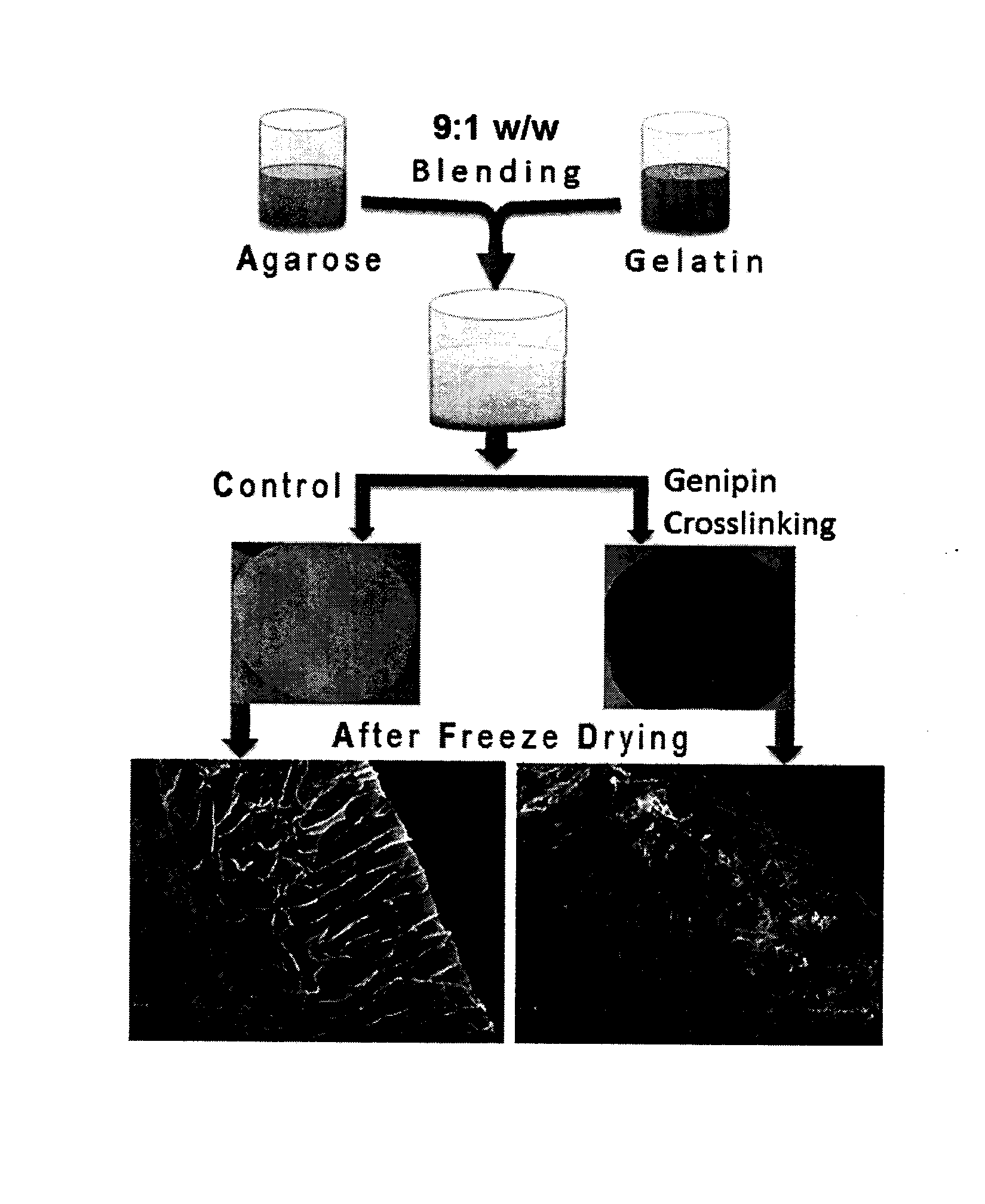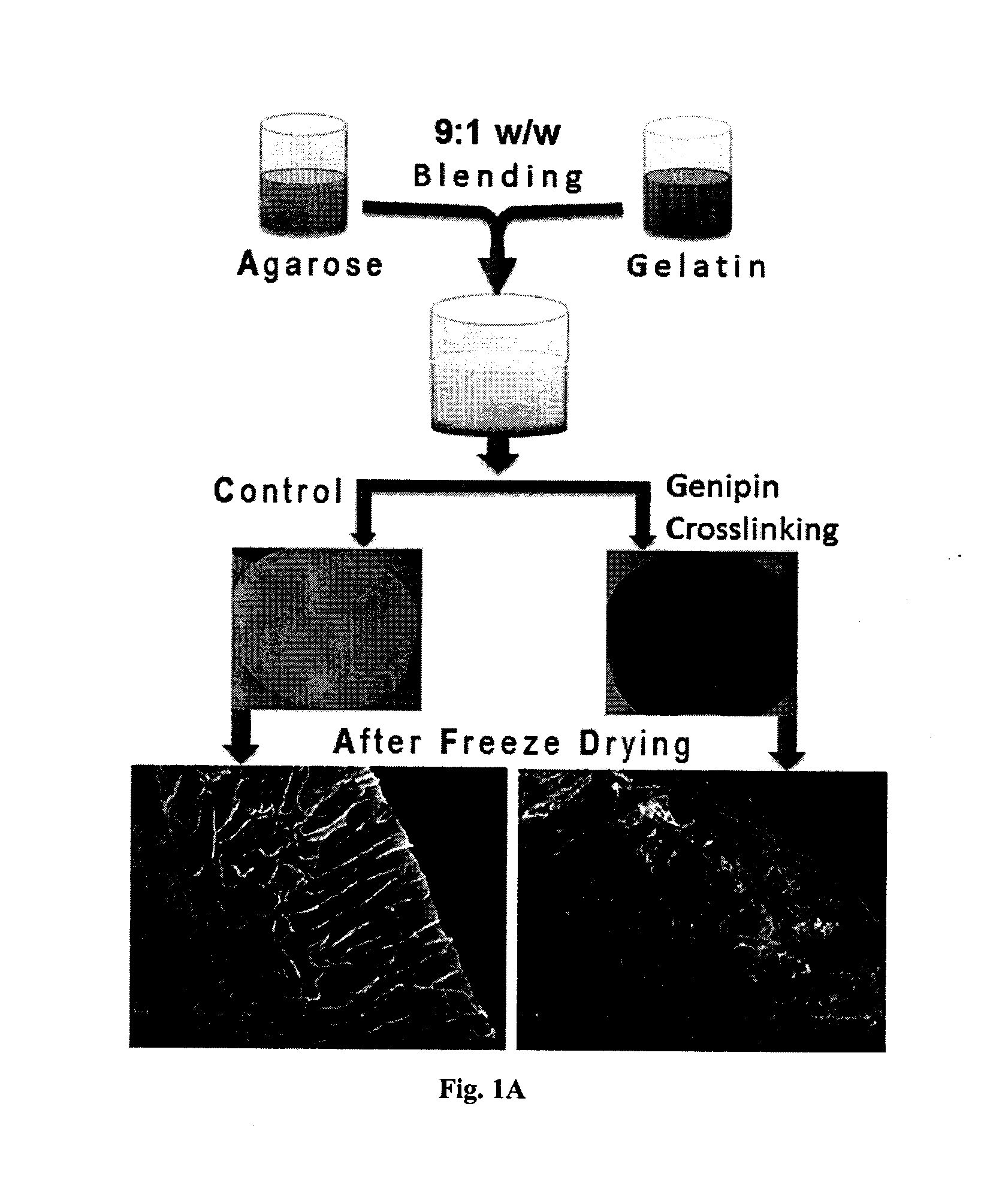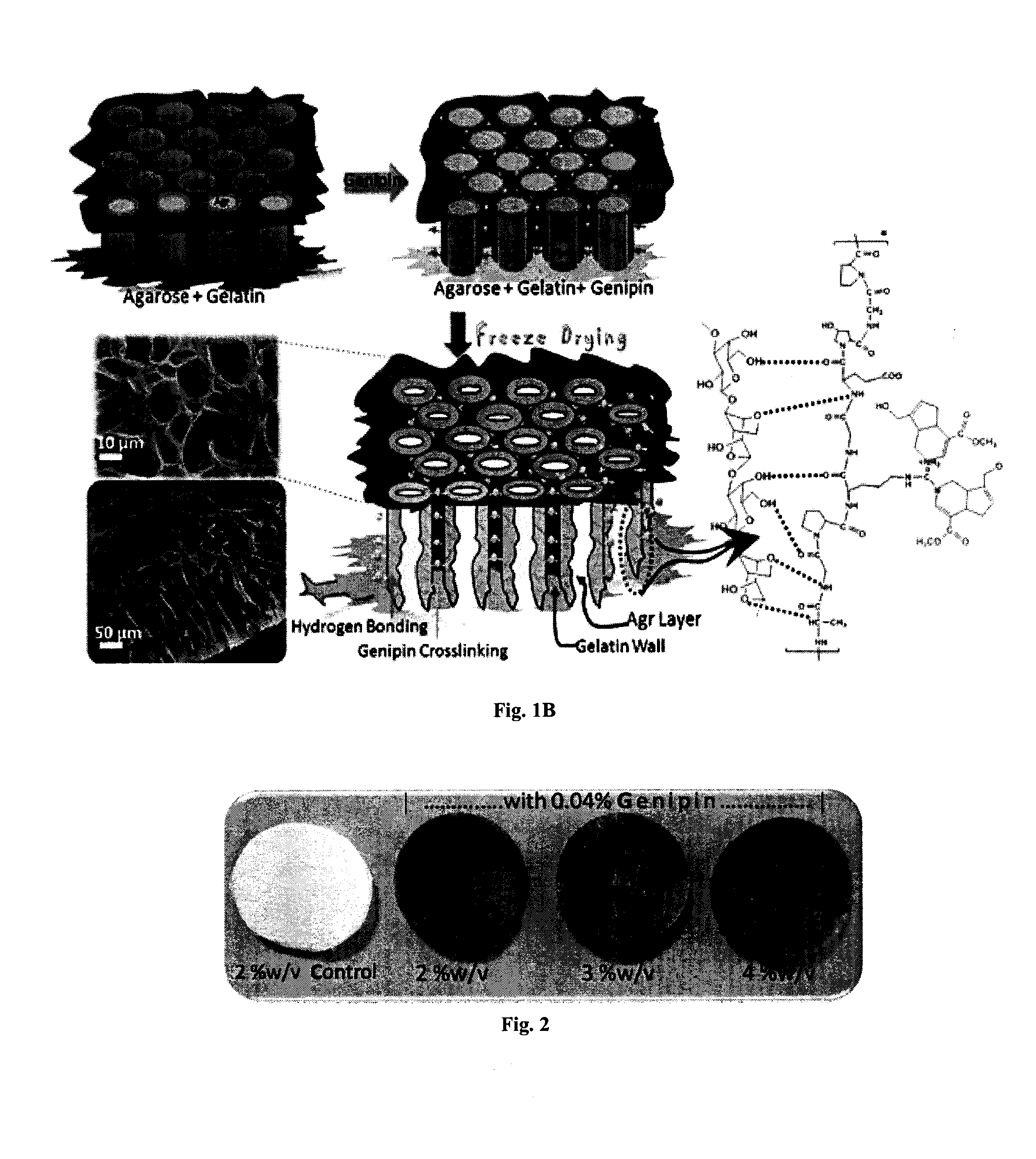Seaweed Polysaccharide Based Superhydrophilic Foam Membrane for Energy-Efficient Oil-Water Separation
a superhydrophilic foam membrane and oil-water separation technology, applied in membranes, membrane technology, separation processes, etc., can solve the problems of major problems such as the disposal of highly polluting effluent, and achieve the effect of easy disposal in the open environmen
- Summary
- Abstract
- Description
- Claims
- Application Information
AI Technical Summary
Benefits of technology
Problems solved by technology
Method used
Image
Examples
example 1
[0091]1900 mg agarose was dissolved in 75 ml distilled water by heating at 100 degree Celsius for 15 min under microwave / autoclave conditions. 100 mg gelatin was dissolved in 25 ml distilled water under ambient conditions, and was added in to agarose solution under stirring condition at 50 degree Celsius followed by the addition of 40 mg naturally occurring crosslinker genipin, and gradually cooled to room temperature (25° C.) to form a hydrogel. After 10 min, the colour of the whole solution started changing from a transparent solution to light blue in colour due to cross-linking, and the resultant hydrogel was left for 10 days at room temperature (25° C.) to allow crosslinking reaction. After that, crosslinked hydrogel was cut to 0.4 mm thick slices and lyophilized at a freeze-drying temperature of −85° C. under vacuum to obtain porous foam membranes (FIG. 1). The foam membrane was flexible, spongy with high water uptake capacity, and less stabile under experimental conditions. Re...
example 2
[0093]1800 mg agarose was dissolved in 75 ml distilled water by heating at 100 degree Celsius for 20 min under microwave / autoclave conditions. 200 mg gelatin was dissolved in 25 ml distilled water under ambient conditions, and was added in agarose solution under stirring condition at 70 degree Celsius followed by the addition of 40 mg naturally occurring crosslinker genipin, and gradually cooled to room temperature (25° C.) to form a hydrogel. After 10 min, the colour of the whole solution started changing from a transparent solution to light blue in colour due to cross-linking, and the resultant hydrogel was left for 10 days at room (25° C.) temperature to allow for complete crosslinking reaction. After that, crosslinked hydrogel was cut to 0.4 mm thick slices and lyophilized at a freeze-drying temperature of −85° C. under vacuum to obtain porous foam membranes. The foam membrane was flexible, spongy and having negligible water uptake capacity. Easy to recycle and reuse through sim...
example 3
[0094]1700 mg agarose was dissolved in 75 ml distilled water by heating at 100 degree Celsius for 10 min under microwave / autoclave conditions. 300 mg gelatin was dissolved in 25 ml distilled water under ambient conditions, and was added in agarose solution under stirring condition at 60 degree Celsius followed by the addition of 40 mg naturally occurring crosslinker genipin, and gradually cooled to room temperature (25° C.) to form a hydrogel. After 10 min, the colour of the whole solution started changing from a transparent solution to light blue in colour due to cross-linking, and the resultant hydrogel was left for 10 days at room temperature (25° C.) to allow for complete crosslinking reaction. After that, crosslinked hydrogel was cut to 0.4 mm thick slices and lyophilized at a freeze-drying temperature of −85° C. under vacuum to obtain porous foam membranes. The foam membrane was flexible, spongy with high water uptake capacity, and less stabile under experimental conditions. R...
PUM
| Property | Measurement | Unit |
|---|---|---|
| wt % | aaaaa | aaaaa |
| wt % | aaaaa | aaaaa |
| temperature | aaaaa | aaaaa |
Abstract
Description
Claims
Application Information
 Login to View More
Login to View More - R&D
- Intellectual Property
- Life Sciences
- Materials
- Tech Scout
- Unparalleled Data Quality
- Higher Quality Content
- 60% Fewer Hallucinations
Browse by: Latest US Patents, China's latest patents, Technical Efficacy Thesaurus, Application Domain, Technology Topic, Popular Technical Reports.
© 2025 PatSnap. All rights reserved.Legal|Privacy policy|Modern Slavery Act Transparency Statement|Sitemap|About US| Contact US: help@patsnap.com



